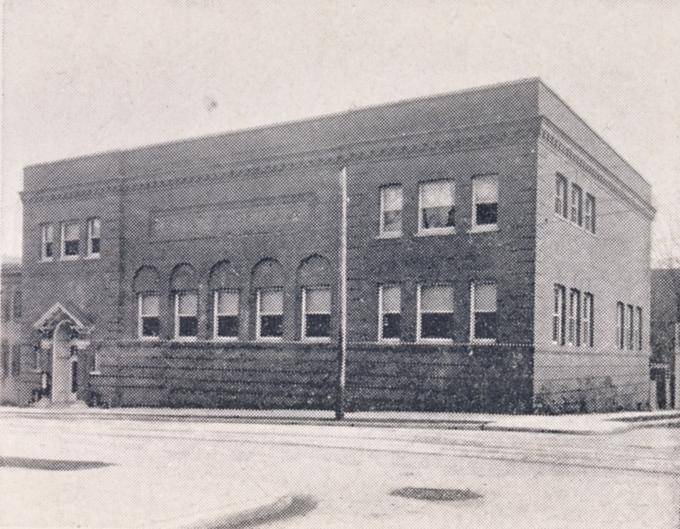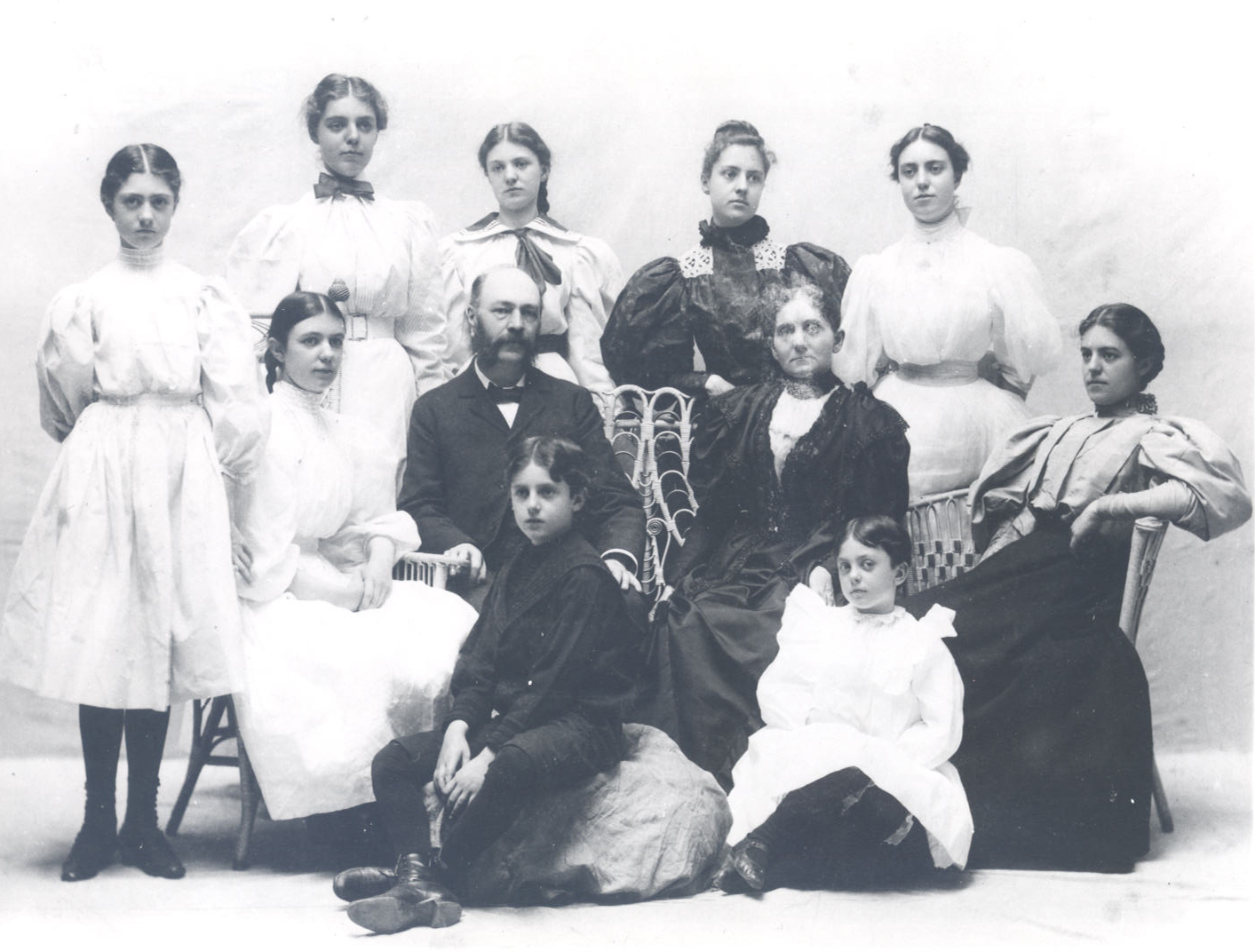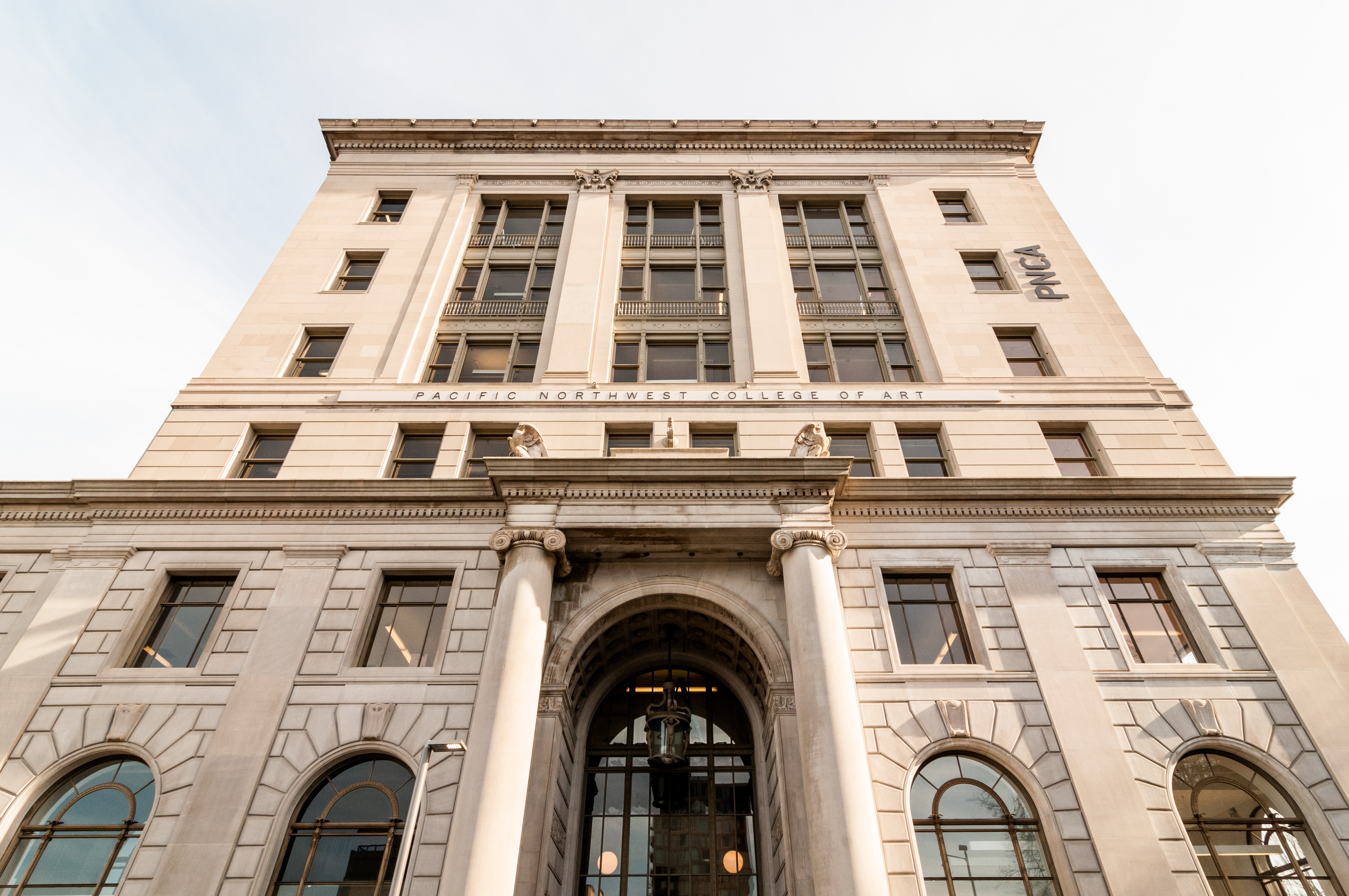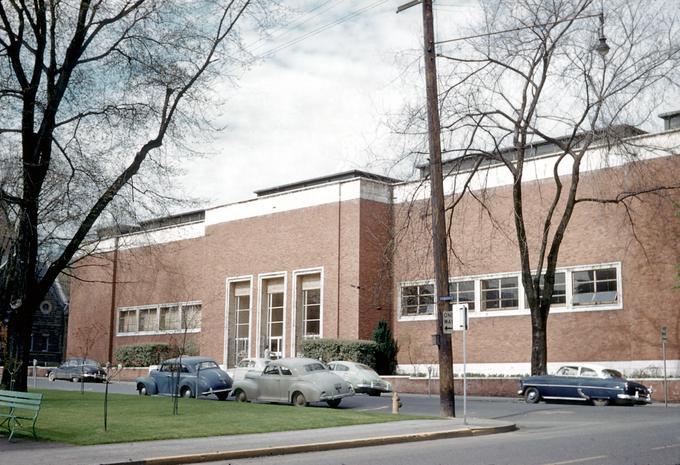The Portland Art Association (PAA) was organized on December 12, 1892, by citizens interested in developing a collection and providing a space where art could be studied. PAA was created with a $1,000 total investment from local businessmen and politicians, including Henry W. Corbett, Henry Failing, Dr. Holt C. Wilson, banker William Mead Ladd, lumber executive Winslow B. Ayer, Reverend Thomas Lamb Eliot, and attorney C.E.S. Wood. The purpose of the association was "to make a collection of works of art and to erect and maintain a suitable building in which the same may be studied and exhibited; to develop and to encourage the study of art and receive gifts and bequests of works of art, money, real and personal property for the uses of the Association."
One of PAA’s first actions was to open a museum in 1895 in the upper hall of the library building at Southwest Seventh (Broadway) at Stark and Oak. The first curator was Henrietta Failing, Henry Failing’s sister, who served in that position until 1908. She returned as the assistant curator in 1914 and was an instructor of art history at the art school from 1917 to 1940.
Agnes Jamieson was curator from 1908 until 1909, with Alice Strong and Lucy Failing Burpee as substitute curators. Anna Belle Crocker was named curator in September 1909. She held that position for twenty-seven years and also served as principal of the art school. Other early association employees included the janitor, Roper; a pageboy (Roper’s son); a museum assistant, Ada Wood Wintler; and a bookkeeper.
Early in its history, PAA encouraged the study of art by providing a collection of Greek and Roman plaster casts that art students could sketch and hosting guided tours. In 1915, Ione Dunlap began giving lectures in classrooms, one of the first collaborative efforts between public schools and art museums in the country.
The PAA opened the School of the Portland Art Association (later the Museum Art School) in 1909. The school’s first teacher was Kate Cameron Simmons, a graduate of Teacher’s College of Columbia University. Other early teachers included Henry "Harry" F. Wentz (1910-1942), Mary Hortense Webster (1910-1913), Helen Putnum (1914-1918), Clara Jane Stephens (1916-1939), and Leta Kennedy (1920-1921; 1922-1971). By the 1960s, annual attendance at the school had reached ninety students. Capacity increased after the 1970 construction of a new five-story building, built over the foundation of the Ladd School building behind the museum, which had moved to the Park Blocks in 1932. By the 1976-1977 school year, the student body had burgeoned to 209. In 1981, the school was renamed the Pacific Northwest College of Art (PNCA).
In 1979, PAA became the parent organization to the art museum, the art school, and the Northwest Film Study Center (founded in 1971). Financial pressures and the complexity of operating three subsidiaries led PAA’s board to form a Long Range Planning Committee to consider the mission, structure, and finances of the association. In a report presented to the board in February 1983, the committee proposed two possible scenarios, one that would consolidate the school and film center under an educational division of the museum and a second that would establish three autonomous institutions—the museum, college of art, and media center. Neither alternative was adopted.
PAA was renamed the Oregon Art Institute on July 31, 1989. In 1991, the board organized a semi-autonomous board of governors to separate the school from the museum. About a year later, on April 21, 1992, the name was changed to the Portland Art Museum. PNCA was incorporated as a separate nonprofit organization in 1994, and the school moved to Portland's Pearl District in 1998. The Northwest Film Study Center continues to operate under the Portland Art Museum as the Northwest Film Center.
The early establishment of an art association in Portland reflects the founders’ belief in the value of culture to the community. In a dedication speech for the Skidmore Fountain in 1888, C.E.S. Wood proclaimed that “good citizens are the riches of a city.” Recognition of the relationship that exists between good citizens and education, between citizenship and culture, must have inspired Wood and others to found the PAA four years later.
-
![]()
Portland Art Museum, SW 5th and Taylor St., 1908.
Courtesy University of Oregon Libraries, Building Oregon coll
-
![Edward and Olivia Failing family, Henrietta standing, second from right]()
Failing family, Henrietta standing, second from right.
Edward and Olivia Failing family, Henrietta standing, second from right Courtesy Oreg. Hist. Soc. Research Lib., neg. no.25779
-
![]()
Thomas Lamb Eliot, c.1867.
Courtesy Oreg. Hist. Soc. Research Library, 011487
-
![Henry Winslow Corbett.]()
Corbett, Henry Winslow, bb008483.
Henry Winslow Corbett. Oreg. Hist. Soc. Research Libr., bb008483
Related Entries
-
![Anna Belle Crocker (1867–1961)]()
Anna Belle Crocker (1867–1961)
Anna Belle Crocker was curator of the Portland Art Association’s museum…
-
![Henrietta Henderson Failing (1868-1953)]()
Henrietta Henderson Failing (1868-1953)
Henrietta Henderson Failing (1868-1953) was a pioneering leader of the …
-
![Pacific Northwest College of Art]()
Pacific Northwest College of Art
Pacific Northwest College of Art (PNCA), founded in 1909 by the Portlan…
-
![Portland Art Museum]()
Portland Art Museum
The Portland Art Museum, which opened in 1895 in the city library with …
-
![Portland Art Museum School]()
Portland Art Museum School
In October 1909, the Portland Art Association (PAA) opened its school, …
Map This on the Oregon History WayFinder
The Oregon History Wayfinder is an interactive map that identifies significant places, people, and events in Oregon history.
Further Reading
Allen, Ginny and Jody Klevit. Oregon Painters: The First Hundred Years (1859-1959). Portland: Oregon Historical Society Press, 1999.
MacKoll, E. Kimbark. The Shaping of a City: The Business and Politics of Portland, Oregon 1885-1915. Portland, Ore.: Georgian Press Co., 1976.
Munro, Sarah Baker. Contribution. In Harry Widman: Image, Myth, and Modernism, by Roger Hull. Salem Ore.: Hallie Ford Museum of Art, Willamette University, 2009.







